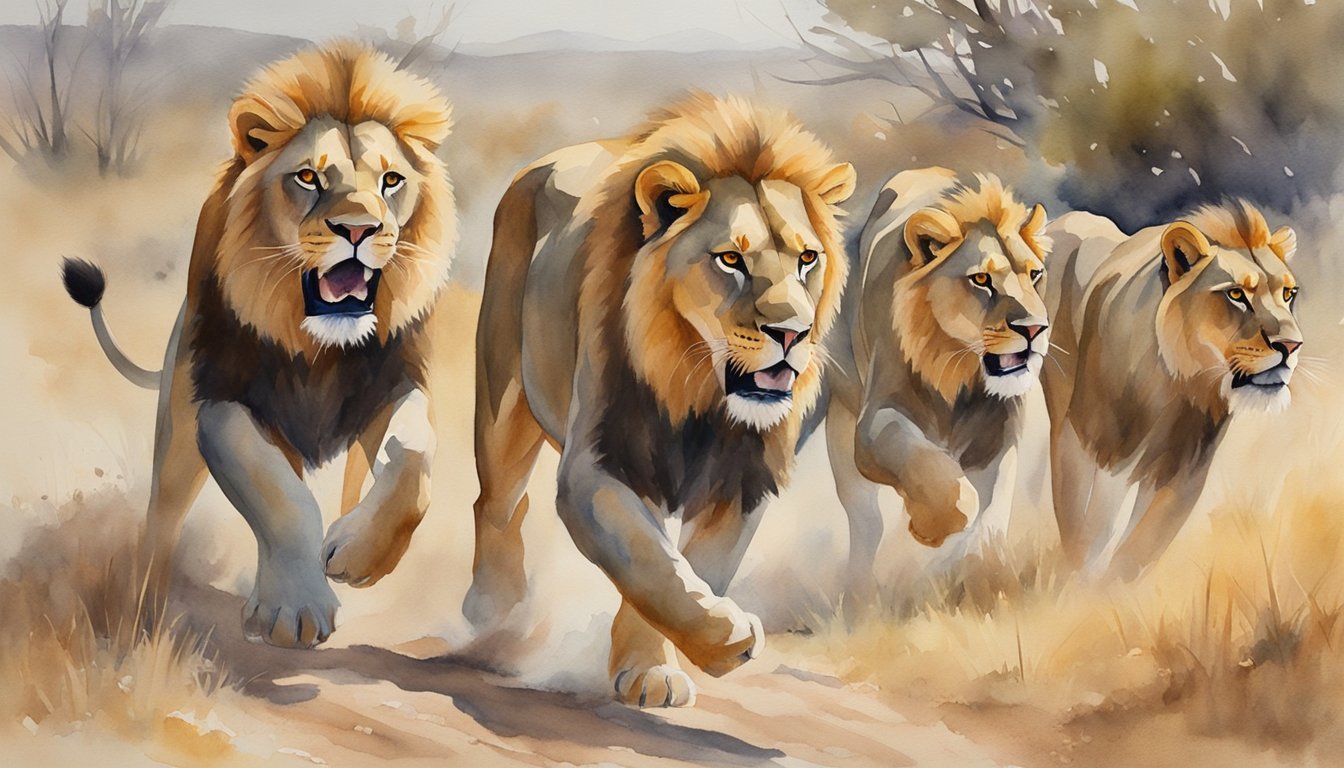Understanding Lion Social Dynamics
The Pride: Core Family Unit
A lion pride is a social group or family unit consisting of multiple lions, both males and females, living together in a specific territory. This social structure is a fundamental aspect of lion behavior and is unique among the world’s large cat species. A typical pride is composed of 3 to 40 lions, with the majority being related females and their offspring, such as lion cubs.
Lionesses within a pride work cooperatively in hunting, providing support in raising their cubs, and maintain strong social bonds. These relationships between lionesses provide a stable environment that plays a crucial role in the survival and social dynamics of the group.
Males and Coalitions: Dominance and Power
Moving on to male lions, they play a significant role in the social dynamics of a pride. Male lions, often forming a group known as a coalition, are responsible for defending the pride’s territory and ensuring the safety of the group and its resources. Their territorial behavior helps protect the pride from intruders and maintains a stable environment for the pride members.
A dominant male or group of male lions, called a coalition, is often made up of related males, such as brothers or cousins, who have formed alliances to increase their chances of successfully taking over and maintaining control of a pride. These coalitions typically comprise 2 to 6 adult males. In cases where a new coalition takes over a pride, they may sometimes kill the existing cubs to ensure that their genes are passed onto future generations.
In summary, the social structure of lions revolves around prides and coalitions built upon strong relationships among related females, their offspring, and cooperative alliances between adult males. These connections provide a unique and intricate balance of power and cooperation, ensuring the survival and stability of the lion’s social dynamics.
Lion Life and Survival Tactics

Hunting Strategies and Prey
Lions are known for their cooperative hunting strategies, making them experts in capturing their prey. The group of female lions, called the pride, is primarily responsible for hunting. They often employ techniques such as stalking, ambush, and coordinated attacks to target a wide range of prey, including herbivores like buffalo, zebra, and antelope1.
Reproduction and Offspring Care
Breeding in lions happens year-round, but it often intensifies when resources are abundant. Male lions establish dominance and mating rights through fierce battles with rivals. A dominant male lion has exclusive rights to mate with the female lions within his pride. After mating, a gestation period of approximately 3.5 months follows before giving birth to a litter, typically consisting of 1-4 cubs2.
Lions exhibit communal care for their offspring, with females jointly attending to each other’s cubs in nursery groups3. This shared responsibility enables nursing, protection, and social bonding among the group. Cubs remain in their crèches until they are weaned, usually around 6-8 months of age4.
Threats and Protection Mechanisms
Lion prides face various threats in their natural habitats, including predators, human encroachment, and habitat loss. Some predators, like hyenas, pose a risk by intentionally taking lion cubs5. To protect their young, lions organize their territories and actively defend against intruders6.
Conservation efforts are crucial to address human-driven challenges that jeopardize lion populations. Through habitat preservation, public education, and policy implementation, we can help ensure the survival of these magnificent creatures and their unique social structures.

